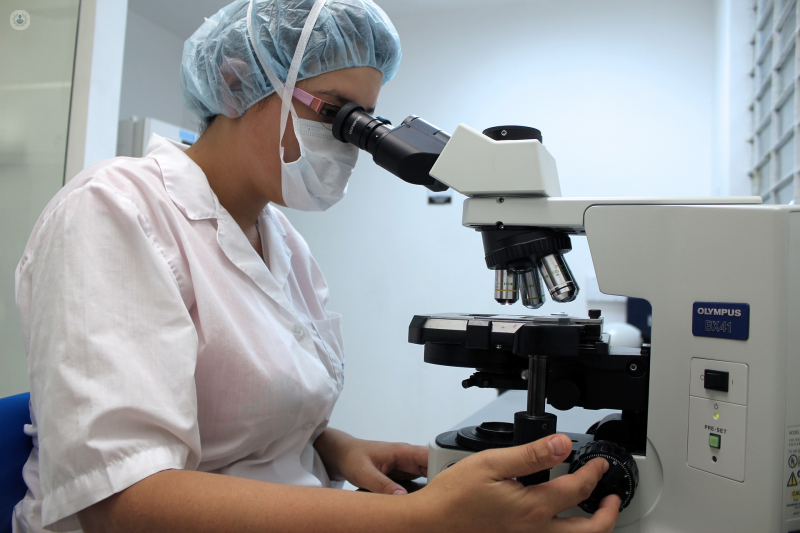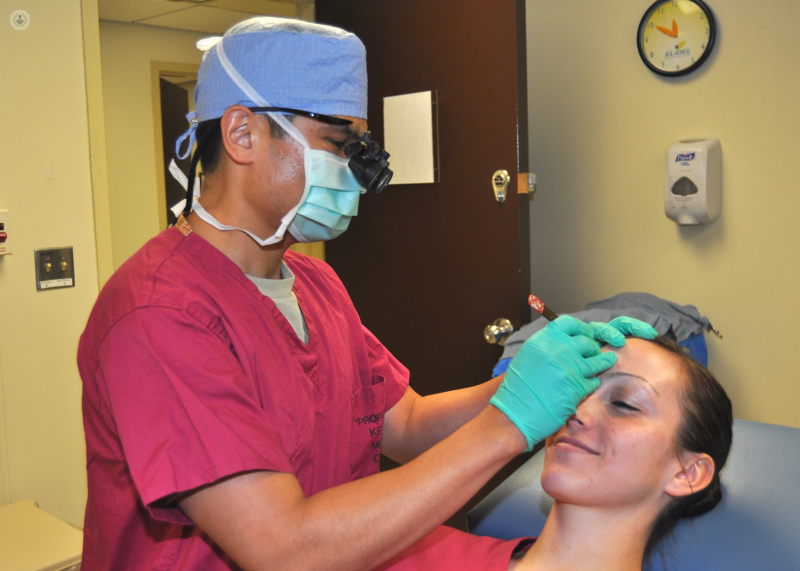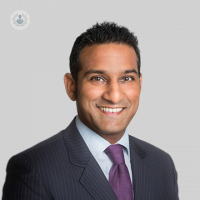Mohs surgery: what to expect
Written by:Skin cancer. The most common cancer in the western world, and a big source of worry. There are several different forms, but for the most common (basal cell and squamous cell carcinoma) there is an answer. Mohs surgery was developed by and named after Dr Frederick Mohs in the 1930s (it is not, as some people think, an acronym!), and has since been refined into a precise technique, which is still used by doctors today. Highly experienced dermatologist Dr Dev Shah talks to Top Doctors about what to expect from Mohs surgery.
What is Mohs surgery?
Mohs micrographic surgery is a skin cancer removal technique to remove tumours in the most accurate manner, by looking at 100% of the margin. It has a recurrence rate of less than 1% and leaves patients with the smallest and therefore most cosmetically pleasing scar. If you compare it to normal surgery, the beauty is that you can get your results on the day, so you know the tumour is removed and gone! In most cases, you will also have had the full reconstruction on the day, so you can walk out fully cured.
How is Mohs surgery performed?
Usually, it is carried out under anaesthetic, under sterile conditions. It’s generally local anaesthesia, so you are able to eat and drink on the day. Local anaesthetic is injected and for the rest of the day, you should have a painless procedure. The surgeon takes a layer of skin and examines it, and within half an hour you should have your results telling you whether it is clear. If the skin is clear of tumour, then we will reconstruct the area the skin was taken from. If it is not, some more will be taken, aiming not to remove normal skin, but only cancerous cells. This is repeated until the sample taken is clear.
When is Mohs surgery performed?
Mohs surgery is generally performed for non-melanoma skin cancers, e.g. tumours like basal cell carcinoma or squamous cell carcinoma. These are the most common cancers in the western world. The Mohs procedure is carried out where we need spare normal skin; it is usually done on the face, the digits and the genitalia.
What is slow Mohs surgery?
Slow Mohs surgery is when Mohs is carried out in the same manner, but multiple visits to the hospital are required at different stages, because the tissue removed is sent off to a lab and takes two to three days to be analysed. Mohs surgery is usually quick, because frozen section procedure is used (tissue is simply frozen, then cut to perform a rapid analysis), whereas conventional histology (microscopic study of tissue) is done with paraffin, which takes two to three days to process. This more laboured approach is needed for DFSP and lentigo maligna, where these tumours are not as easy to see on frozen skin sections.

How long does Mohs surgery take to heal?
In general, it takes about a week to resume normal activity, but it really depends on what you have had done in the reconstruction. If you have had a flap (which means moving a piece of skin that is still attached to the body), or if you have had a graft (removing a piece of skin from the body and reattaching it somewhere else), your healing time is usually about a week.
If you are concerned about a mole or worried that you have skin cancer, you should consult your doctor or a specialist immediately. Remember, if you have something new developing on your skin or an area that is not healing (i.e. bleeding, pain, crusting) then you should have a diagnosis made by a qualified doctor.



